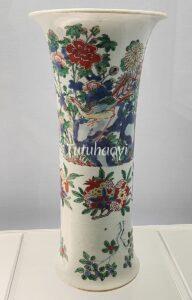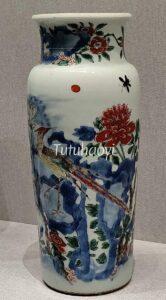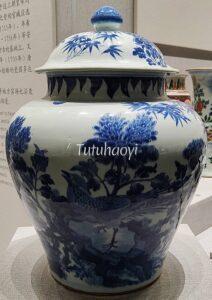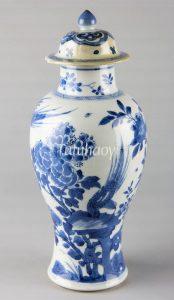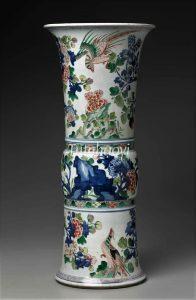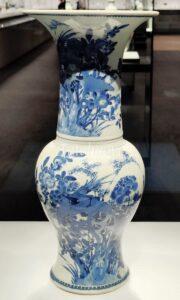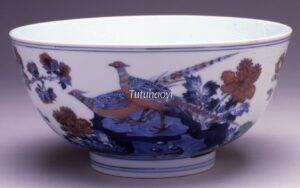May your splendid house be filled with wealth and prestige
锦堂富贵
© Tutuhaoyi.com owns the copyright of the description content for the images attached. Quoting all or part of the description content on this page is permitted ONLY IF ‘Tutuhaoyi.com’ is clearly acknowledged anywhere your quote is produced unless stated otherwise. (本页描述内容版权归Tutuhaoyi.com所有,转发或引用需注明 “Tutuhaoyi.com”, 侵权必究, 已注开源信息的条目除外。)
Pun Design:
Punning Details:
– The long-tailed pheasant has another name called ‘jin ji 锦鸡’ in Chinese, meaning a cockerel with a colourful tail. ‘Jin 锦’ in ‘jin ji 锦鸡’ makes a pun on the word ‘jin 锦’ in ‘jin tang 锦堂’ which means ‘magnificent house’.
– The peony flower, known in Chinese as ‘mudan hua 牡丹花’, has a nickname of ‘fugui hua 富贵花’, literally, the ‘flower of wealth and prestige’.
Thus, the composition forms a pictorial pun that conveys the auspicious wish of ‘May your splendid house be filled with wealth and prestige’.
Related Pun Pictures:
May your jade palatial home be honoured and full of riches 玉堂富贵
May your jade residence be prosperous 玉堂锦绣
Related Motifs & Symbols:
Fig 1: Gu-shaped vase with underglaze blue and overglaze enamelled decoration, Shunzhi period (1644–61), Qing dynasty, courtesy of the Shanghai Museum, China
Fig 2: porcelain vase with underglaze blue and overglaze enamelled decoration, Shunzhi period (1644–61), Qing dynasty, courtesy of the Palace Museum, Beijing, China
Fig 3: lidded porcelain jar with underglaze blue decoration, Shunzhi period (1644–61), Qing dynasty, courtesy of the Palace Museum, Beijing, China
Fig 4: famille verte porcelain jar, mid to late 17th century, courtesy of the Metropolitan Museum of Art, New York
Fig 5: porcelain jar with underglaze blue decoration, mid to late 17th century, Qing dynasty, courtesy of the Metropolitan Museum of Art, New York
Fig 6: famille verte Gu-shaped vase, Kangxi (1662–1722) period, Qing dynasty, courtesy of the Museum of Fine Arts, Boston
Fig 7: famille verte porcelain flowerpot, Kangxi period (1662–1722), Qing dynasty, courtesy of the Rijksmuseum, Amsterdam
Fig 8: Gu-shaped vase with underglaze blue decoration, 1708, Kangxi period (1662–1722), Qing dynasty, courtesy of the Shanghai Museum, China
Fig 9: porcelain bowl with underglaze blue, brown, and red and overglaze enamel green decoration, Kangxi period (1662–1722), Qing dynasty, courtesy of the Walters Art Museum, Baltimore, Maryland, US
Fig 10: porcelain bowl with enamelled decoration, Yongzheng period (1723–35), Qing dynasty, courtesy of the National Palace Museum, Taipei
Fig 11: porcelain bowl with enamelled decoration, Yongzheng period (1723–35), Qing dynasty, courtesy of Philadelphia Museum of Art
Fig 12: porcelain bowl with enamelled decoration, Qianlong period (1736–95), Qing dynasty, courtesy of the Chinese University of Hong Kong Art Museum
